- Solutions
-
-
Use Cases
-
-
- Our Resources
ARTICLES
- Blogs
- Case Studies
DOWNLOADABLES
- eBooks & Whitepapers
- Videos
- Company
- Contact Us
- Request Demo
Use Cases
ARTICLES
DOWNLOADABLES
In the restaurant industry, customer loyalty programs have quickly become a vital component to any successful business strategy.
With the rise of digital platforms and the increasing expectations of diners, restaurants turn to customer loyalty software to build and maintain strong relationships with their patrons.
But with so many options on the market, how do you choose the right solution for your business?
When comparing the various loyalty platforms available, be sure to focus on:
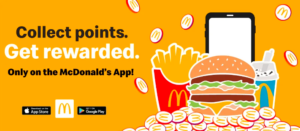
The software should allow you to tailor the loyalty program to reflect your restaurant’s brand identity and resonate with your target audience.
This includes the ability to design the program’s visual elements, set unique reward structures, and create personalised offers that cater to different customer segments. A customisable program ensures that your loyalty initiative feels like an integral part of your brand rather than a generic add-on.
A loyalty program is only as good as its usability.
The software should offer an intuitive and easy-to-navigate interface for both customers and your staff. For customers, the process of signing up, earning points, and redeeming rewards should be seamless and straightforward.
For staff, the software should be easy to integrate into daily operations without requiring extensive training or disrupting workflow.
To maximise efficiency, your loyalty software should integrate smoothly with your existing POS system, customer relationship management (CRM) software, and other tools you use in your restaurant.
This integration allows for real-time tracking of customer purchases, seamless updating of rewards points, and easy access to customer data, all of which contribute to a more streamlined and effective loyalty program.
In today’s mobile-centric world, having a loyalty program that supports a mobile app is essential.
A dedicated mobile app allows customers to easily track their points, receive notifications about special offers, and redeem rewards directly from their smartphones. This convenience can significantly increase customer engagement with your loyalty program.
Robust data analytics and reporting features are crucial for understanding how your loyalty program is performing. The software should provide detailed insights into customer behaviour, such as spending patterns, frequency of visits, and preferences.
Additionally, it should offer reports on the effectiveness of your loyalty initiatives, helping you to identify areas for improvement and optimise your program accordingly.
Effective communication is key to keeping customers engaged with your loyalty program.
Look for software that includes marketing tools like automated messaging, which can send out reminders, special offers, or birthday greetings to your customers.
Email campaign capabilities allow you to reach out to your customer base with tailored promotions, while social media integration lets you to easily share loyalty program updates and engage with customers on platforms where they spend most of their time.
Reliable customer support is essential for ensuring your loyalty program runs smoothly.
The software provider should offer robust support options, including live chat, phone support, and a comprehensive knowledge base to help you troubleshoot any issues that arise.
Having access to prompt and effective technical support ensures that any disruptions to your loyalty program are minimised, keeping your operations running smoothly.
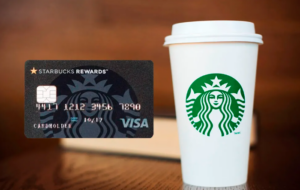
Understanding pricing models is crucial to ensuring that your solution fits within your budget and provides the best value for your investment.
Pricing models can vary significantly between different software providers, so it’s important to look closely at the details to avoid unexpected costs.
Most customer loyalty software platforms operate on a subscription-based pricing model, where you pay a monthly or annual fee for access to the service.
These fees can range from affordable rates for basic packages to higher costs for more comprehensive plans that include advanced features.
When comparing subscription fees, it’s important to understand what each plan includes.
Some key aspects to consider are the number of users or customer profiles supported, access to premium features like advanced analytics or custom branding, and whether updates and new features are included in the cost.
Also, consider whether the software offers a free trial or a scaled-down version that you can test before committing to a full subscription.
In addition to subscription fees, some loyalty software providers charge transaction fees.
These fees might be applied on a per-transaction basis, meaning you pay a small fee every time a customer earns points or redeems a reward.
Alternatively, there could be a per-user fee, where you are charged based on the number of active users or customers enrolled in the loyalty program. Transaction fees can add up quickly, especially for high-volume restaurants, so it’s important to factor these costs into your overall budget.
Make sure to ask the provider about any transaction fees upfront and calculate how they might impact your costs over time.
Some loyalty software providers may charge additional fees for services like customer support beyond basic troubleshooting, customisation of the software to fit your specific needs, or integration with third-party tools and systems.
For instance, if you require a custom-designed loyalty program that reflects your brand’s unique identity, there may be extra charges for development and design work.
Similarly, if you need the software to integrate with your existing POS system, CRM, or other tools, there might be integration fees or charges for API access. It’s crucial to clarify all potential costs with the provider before making a decision to avoid any surprises down the line.
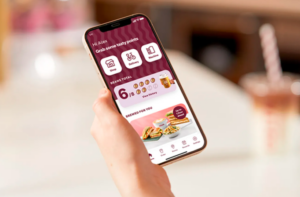
As your restaurant business grows and evolves, it’s essential to choose customer loyalty software that can grow with you and adapt to your changing needs.
As you open new locations, increase your customer base, or expand your service offerings, your loyalty program will need to accommodate these changes without disrupting your operations.
Look for software that supports multi-location management, allowing you to administer your loyalty program across various branches seamlessly.
Additionally, consider whether the software can handle a growing number of customer profiles and transactions without performance issues or the need for costly upgrades.
Scalable software should offer the ability to easily add new users, customers, and features as your business expands, ensuring that your loyalty program continues to function efficiently no matter how large your restaurant operation becomes.
The restaurant industry is constantly evolving, with customer preferences, dining trends, and technological advancements shifting over time.
Your loyalty program should be flexible enough to adapt to these changes. Look for software that allows you to easily modify your rewards structure, add new types of promotions, or incorporate new engagement channels as needed.
For example, if you notice that customers are increasingly using mobile apps, the software should enable you to introduce mobile-based rewards or integrate with popular mobile payment systems.
The software should support seasonal promotions, limited-time offers, and other dynamic elements that keep your loyalty program fresh and engaging.
Flexibility also means the ability to upgrade your plan or features as your needs change, without having to switch to a completely new platform. This adaptability ensures that your loyalty program remains aligned with both your business goals and the expectations of your customers.
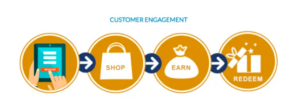
A successful customer loyalty program isn’t just about rewards—it’s about creating a seamless, engaging experience that keeps customers coming back.
When evaluating loyalty software, it’s crucial to consider how it impacts the overall customer experience.
The user journey is at the heart of any loyalty program.
It begins the moment a customer signs up and continues through earning rewards, receiving offers, and redeeming benefits. The process should be intuitive and straightforward, with minimal friction at every step.
A well-designed loyalty program will make it easy for customers to enroll, track their progress, and understand how they can earn and redeem rewards.
Look for software that offers a streamlined sign-up process, clear communication about how the program works, and a user-friendly interface that customers can navigate without confusion.
Consider the engagement features—such as gamification elements, interactive reward systems, or instant gratification rewards—that can enhance the overall experience and keep customers actively participating.
Personalisation is a powerful tool for boosting customer loyalty.
By using customer data to tailor rewards and promotions to individual preferences, you can create a more meaningful and relevant experience for each customer.
Effective loyalty software should be able to analyse customer data—such as purchase history, frequency of visits, and spending patterns—to generate personalised offers that resonate with each diner.
If a customer frequently orders a specific dish, the software could offer a discount on that item or suggest a related promotion. Personalised rewards not only make customers feel valued but also encourage them to engage more deeply with your brand.
Look for software that supports advanced segmentation and targeting capabilities, allowing you to create customised offers that appeal to different customer segments.
Gathering and acting on customer feedback is essential for continuously improving your loyalty program and overall customer experience.
The right loyalty software should include tools for collecting feedback, whether through surveys, ratings, or direct comments. This feedback can provide valuable insights into what customers like about your program, what needs improvement, and how they perceive your brand overall.
Moreover, the software should enable you to act on this feedback quickly, whether by making adjustments to the program, addressing individual concerns, or implementing new features based on customer suggestions.
Consider whether the software allows for automated feedback collection, integrates with your CRM to store and analyse feedback, and provides actionable reports that help you make data-driven decisions.
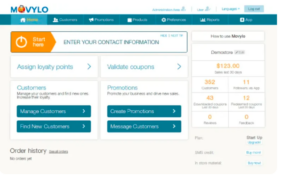
Successfully implementing customer loyalty software in your restaurant requires careful planning and a structured approach.
The implementation and onboarding process is crucial to ensuring that the software is seamlessly integrated into your operations and that your team is fully equipped to use it effectively.
The setup process typically involves several key steps, including initial configuration, customisation, and integration with your existing systems.
During the configuration phase, you’ll need to set up your program’s structure—defining the rewards, tiers, and rules that will govern how customers earn and redeem points.
Customisation allows you to align the program with your brand, including designing the visual elements and setting up personalised features. Integration is crucial, as the software must work smoothly with your POS system, CRM, and any other tools you use.
A thorough setup process will ensure that all components are correctly aligned, reducing the likelihood of technical issues down the line. It’s important to work closely with the software provider during this phase to ensure that all your specific needs are met.
A successful loyalty program depends on your team’s ability to engage customers, manage the software, and troubleshoot any issues that arise.
The software provider should offer comprehensive training resources, including user manuals, video tutorials, and live training sessions. It’s also beneficial if the provider offers ongoing support, such as a helpdesk or dedicated account manager, who can assist with any questions or challenges that arise after the initial training.
Investing in thorough training for your team will ensure that they are confident and competent in using the software, which in turn will enhance the customer experience and the overall success of the loyalty program.
Understanding the expected timeline for implementation is crucial for planning purposes.
The timeline can vary depending on the complexity of the software, the extent of customisation required, and the level of integration with existing systems.
Typically, the process begins with a discovery phase, where your needs are assessed, followed by the setup and customisation phase, which can take several weeks.
Integration with other systems might add additional time, especially if it requires technical adjustments or third-party coordination.
On average, you can expect the full implementation process to take anywhere from a few weeks to a couple of months, depending on these factors. Having a clear timeline in place will help you coordinate with your team and ensure a smooth transition to the new loyalty program.
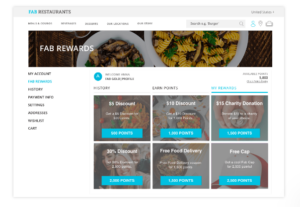
After implementing your customer loyalty program, it’s essential to regularly measure its success to ensure it’s meeting your goals and delivering value to your restaurant.
By tracking specific key performance indicators and conducting a ROI analysis, you can evaluate the effectiveness of your loyalty software and make data-driven decisions for future improvements.
To accurately assess the performance of your loyalty program, you need to monitor customer engagement, retention, and overall business impact.
To calculate ROI, you’ll need to compare the costs associated with implementing and maintaining the program against the revenue generated as a result of increased customer loyalty.
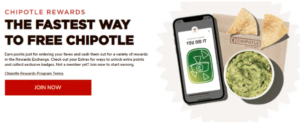
Customer loyalty software is a digital tool designed to help businesses build, manage, and enhance your customer loyalty programs.
These platforms help restaurants create structured systems that reward repeat customers for their continued patronage.
The purpose of customer loyalty software is to encourage repeat business, increase customer retention, and ultimately drive higher revenue by offering incentives that keep customers coming back.
Loyalty software typically integrates with a restaurant’s existing point of sale system, making it easy to track customer purchases, accumulate rewards points, and deliver personalised offers based on individual dining habits.
Beyond simple rewards, these systems often include analytics features that provide insights into customer behaviour, allowing restaurants to tailor their marketing efforts and create more targeted promotions.
Customer loyalty programs come in various forms, each with its own unique structure and benefits.
Here are the most common types:
Choosing the right customer loyalty software for your restaurant is a critical decision that can have a lasting impact on your business.
By understanding the different types of loyalty programs, prioritising key features, carefully considering pricing models, and ensuring scalability and flexibility, you can select a solution that aligns with your goals and enhances your customer experience.
Implementation and onboarding are crucial steps that require careful planning to ensure a smooth transition and successful launch.
Once your program is in place, regularly measuring its success through KPIs and ROI analysis will help you fine-tune your approach and maximise the benefits of customer loyalty.
In an industry where customer retention is key to sustained growth, a well-executed loyalty program can set your restaurant apart from the competition.
For assistance in finding the right loyalty platform for your business, get in touch with NFS.